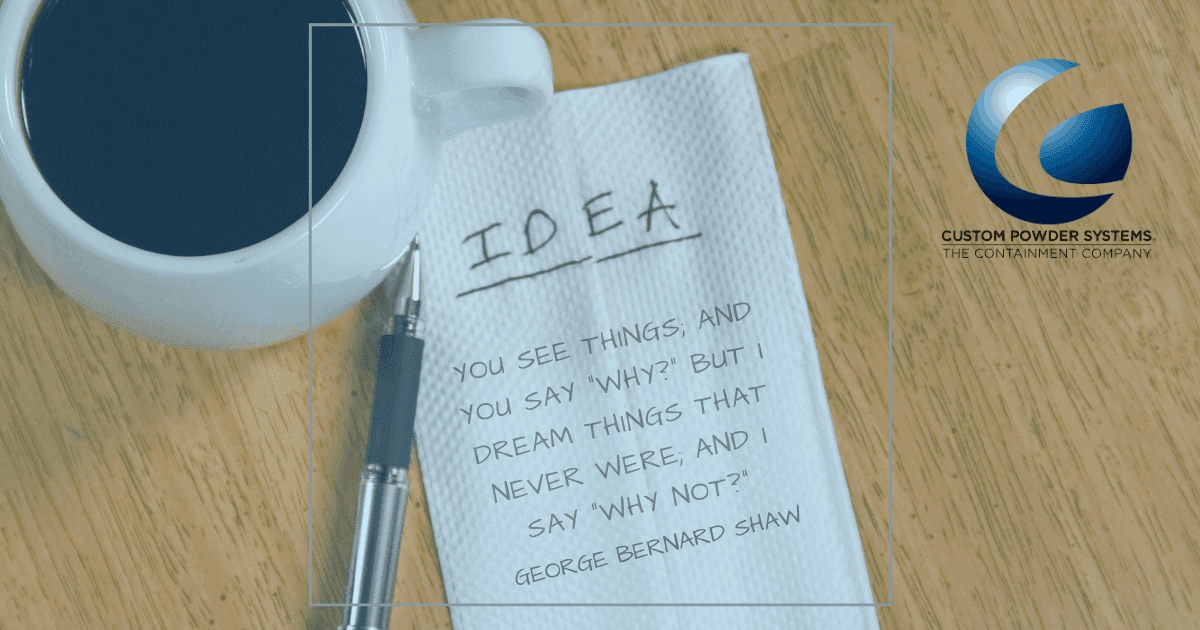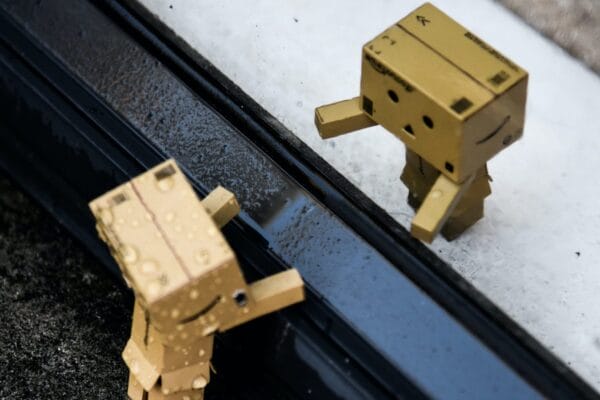At Custom Powder, we believe in working with you every step of the way, from pencil to product. We realize that inspiration often strikes at the most inopportune times, and sometimes you just have to grab what’s in front of you and write it down.
You’re not alone.
Some of the greatest ideas in history came to life by writing them on a scrap of paper, the back of an envelope, or as you’ll read in today’s story, on a bar napkin.
The Irish poet and playwright, George Bernard Shaw (himself no stranger to bar napkins), famously said, “You see things and you say why? But I dream things that never were and I say why not?”
A Guy Named Paul
Paul Lauterbur was an American chemist who turned a napkin into a Nobel Prize. It may have taken over 30 years for the prize to make it into his hands, but along the way, his work changed lives.
The story starts in the late 1930s. Paul was a peculiar kid. He wasn’t especially interested in sports, or playing games, or anything else that the other children were doing.
He preferred to spend his time doing chemistry experiments.
Looking back, Paul describes his childhood as idyllic. His parents both worked hard, but they loved spending time with their family. Though the standout character in Paul’s past was his aunt. She was, according to Paul, “a very gentle person, always willing to listen to a child.”
It’s possible that his aunt was responsible for Paul’s eventual path toward science as a career. She was, herself, fascinated by natural history. She gifted Paul a subscription to Natural History magazine and those early readings helped guide Paul’s curiosity.
Not only did his aunt listen to him and encourage his experimentation, but his teachers did as well. His science teacher even went so far as to allow Paul to experiment in the back of the class while his fellow students studied their lessons.
College was the time when Paul’s life took a dramatic turn. He studied Chemistry at the University of Pittsburgh. One day, during lunch, he began sketching out an idea on the back of a napkin.
The Birth of the MRI
As is common with big ideas, the MRI started with a smaller one. The 1952 Nobel Prize for Physics was awarded to a pair of scientists who had studied nuclear magnetic resonance (NMR). Paul’s idea was that he could use NMR to produce images of the body instead of limiting its use to studying chemical structures of substances.
Paul went on to work at Stony Brook University in the 1960s. As a visiting faculty member to Stanford in 1969, he dove in to further study NMR. Once he returned to Stony Brook in 1970, he continued his studies, and it was that work that would earn him the Nobel Prize in 2003.
In 1971, he sent a paper with his findings to Nature magazine. His example included grainy images that showed the difference between “heavy water” (water with deuterium atoms) and ordinary water (good old H2O). The magazine wasn’t impressed with Paul’s work, blaming their decision to pass on the fuzzy images that had accompanied the submission.
It’s important to note that no other imaging technology of the time could tell the difference between the two types of water.
Problem solvers are not people who give up easily, and that was Paul’s story as well. He inquired about the rejection, stated his case again, and today you can still read Paul’s original paper online.
Paul would later reflect on the irony of Nature’s decision:
“You could write the entire history of science in the last 50 years in terms of papers rejected by Science or Nature.”
From a Napkin to History Books
Paul Lauterbur will go down in history as the father of the modern MRI, and the entire story began on the back of a napkin. You don’t have to be an artist to be successful with napkin design. In fact, it’s less about the art itself and more about getting an idea out of your head.
What’s your big idea? We’re here to help you make it into a reality.







